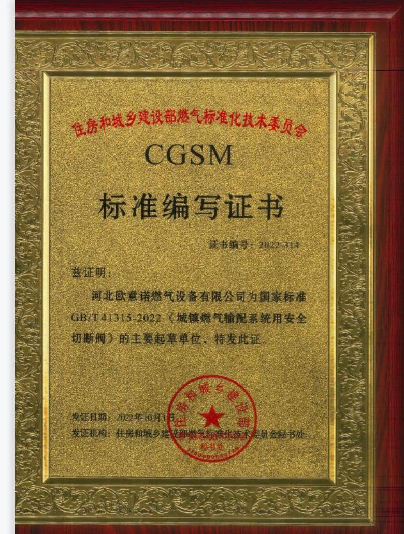
Nov . 09, 2024 11:20
Back to list
Optimizing Gas Coalescence for Enhanced Efficiency in Fluid Systems
Understanding Gas Coalescers Function, Applications, and Benefits
In modern industrial processes, the separation of gases and liquids is a critical operation that ensures efficiency and safety. One of the key devices employed in these processes is the gas coalescer. This technology is increasingly important in various sectors such as oil and gas, chemical manufacturing, and water treatment. This article explores the functioning, applications, and benefits of gas coalescers, providing a comprehensive understanding of their role in enhancing industrial operations.
What is a Gas Coalescer?
A gas coalescer is a filtration device that separates liquid droplets from gas streams. The device operates on a simple principle it allows small liquid droplets suspended in a gas to coalesce, forming larger droplets that can then be separated more easily. This is typically achieved through a combination of gravitational separation and mechanical filtration. As the gas passes through the coalescer, the smaller droplets collide and merge with one another, ultimately falling into a collection chamber due to gravity.
How Do Gas Coalescers Work?
The design of a gas coalescer plays a pivotal role in its effectiveness. It usually consists of a series of filter media specifically designed to promote the coalescence of liquid droplets. The filter media can be made from various materials, including fiberglass, metal, or synthetic fibers. The gas flow rate, pressure, and temperature are crucial parameters that influence the coalescing performance.
Once the gas enters the coalescer, it passes through the filter media, which removes solids and facilitates the merging of liquid droplets. The larger droplets formed then settle down to a collection chamber at the bottom of the unit. The separated liquid can be drained periodically or continuously, depending on the design of the system.
Applications of Gas Coalescers
Gas coalescers are utilized in numerous applications across various industries. In the oil and gas sector, they are commonly used to remove water and other contaminants from natural gas and oil streams. Efficient separation ensures the purity of the products and prevents corrosion and fouling in downstream equipment.
In the chemical industry, gas coalescers help improve the quality of chemical processes by preventing liquid carryover into systems where it can cause issues
. For instance, in petrochemical plants, maintaining clean gas streams reduces the risk of reactions that could compromise product quality.gas coalescer

Moreover, in water treatment facilities, gas coalescers can aid in the separation of gases, such as hydrogen sulfide and carbon dioxide, which need to be removed from treated water. This not only ensures compliance with environmental regulations but also enhances the treatment process's overall efficiency.
Benefits of Using Gas Coalescers
The integration of gas coalescers in industrial processes brings a host of benefits
1. Improved Efficiency By ensuring optimal gas purity, coalescers enhance the efficiency of downstream processes and equipment.
2. Cost Savings Reducing the risk of equipment corrosion and fouling decreases maintenance costs and prolongs the lifespan of machinery.
3. Environmental Compliance Effective removal of contaminants helps facilities meet environmental regulations, promoting sustainable industrial practices.
4. Versatility Gas coalescers can be tailored to meet the specific needs of different industries, making them adaptable to various applications.
5. Safety Enhancements By eliminating harmful liquid contaminants, coalescers contribute to overall workplace safety.
Conclusion
In conclusion, gas coalescers are essential devices in modern industrial processes, providing vital separation of liquids from gases. Their efficient functioning, diverse applications, and significant benefits make them a cornerstone in many sectors. As industries continue to evolve and face new challenges, the role of gas coalescers will become even more pronounced, ensuring operational excellence and environmental compliance. The investment in such technology is not merely a choice but a necessity for businesses aiming to thrive in today’s competitive landscape.
Latest news
-
Safety Valve Spring-Loaded Design Overpressure ProtectionNewsJul.25,2025
-
Precision Voltage Regulator AC5 Accuracy Grade PerformanceNewsJul.25,2025
-
Natural Gas Pressure Regulating Skid Industrial Pipeline ApplicationsNewsJul.25,2025
-
Natural Gas Filter Stainless Steel Mesh Element DesignNewsJul.25,2025
-
Gas Pressure Regulator Valve Direct-Acting Spring-Loaded DesignNewsJul.25,2025
-
Decompression Equipment Multi-Stage Heat Exchange System DesignNewsJul.25,2025

